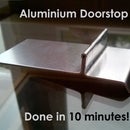Introduction: SolarBook: Phone Charger, Torch, Rave Light and USB Port
This is a bit of an unusual build, as it's hard to define as a single object. It uses a Solar-powered battery to power a phone charger, two sets of LEDs and a USB port. But it is very useful and being housed in a book, looks pretty cool too :) It certainly solved my first-world problem of being too far away from wall socket to charge my phone. Total cost for me came to £14 but I had some parts already. If you were starting from scratch, I would estimate about £18 all-in.
You will need:
For all parts:
A Book (small enough to be easily portable, big enough to fit all the gadgetry in)
Craft Knife
Wire
Solder
Soldering Iron
Helping Hand (see my other instructable #shamelessplug)
Wire cutters/strippers (you can use a small penknife)
Magnets (4 to 6 fairly strong and small ones)
PVA Glue
SuperGlue/Cyanoacrylate
For the Phone charger:
A solar powered phone charger (spend at least £10: anything cheaper will be useless. I used a PowerBee model available on Amazon)
A phone (yeah...)
USB type A PCB mounting socket
For the LED lights:
3 x 3mm superbright white LEDs (about 5000 mcd) (all the electronic components in this Instructable are available in the UK from spiratronics.com)
3 x 3mm superbright colour cycling LEDs (about 5000 mcd)
Either a SPDT or a DPDT slider switch
6 x 47r carbon film resistors
Microswitch (or lever switch) with normally closed contacts
You can make this Instructable without including either the USB socket or the LED array, comment if you're not sure how.
Let's get started!
Step 1: Electronics
Getting the electronics right is the most important part of this project as it can dictate the size of book you will need. If you have a Breadboard (electronic type, not kitchen utensil :P), this is a great time to use it and make sure all your circuity works. The basic circuit diagram is included in the pictures, along with my breadboard version. If you don't have access to one (they're very cheap) you can just solder it all together, as I did next (see picture).
N.B. The reason I've soldered to the microswitch's normally closed contacts is that when the book is closed, the lever is pressed down, turning the circuit off. This means that the LEDs turn on automatically when you open the book. You can replace it with a normal toggle switch if you don't want it to turn on automatically. The slider switch lets you choose which LEDs are on: either torch or disco mode :)
If you want any further help or a walkthrough on this part of the project, please comment.
Step 2: Preparing the Book
Get hold of a book you no longer want to read (preferably hardback); I had two copies of the one I used. The book needs to be tall and wide enough to house your phone and the charger, and thick enough to house the Phone and charger back to back, or the microswitch, whichever is bigger. Mine was a paperback, so I made it into a hardback by adding sheets of card inside the front and back covers. I'm not going to tell you how to hollow out the book, as there are plenty of good instructables on how to do it, including this one. All you need to do differently is not cut all the way through, and make the sections the right size for their contents (see pictures). There also need to be a few holes that go all the way through to route the charger wires. I split my book into three sections; the front, which holds the phone, the back, which holds the charger, and the centre, which contains the LEDs and switches. Also be careful not to glue any of the sections together; clingfilm in between the pages stops this happening.
If you want any further help or a walkthrough on this part of the project, please comment.
Step 3: Fitting and Finishing
Right, the hard work is all done, now the parts just have to be assembled. Where it all goes depends mainly on your method of cutting up the book, but I recommend that everything is glued in place with SuperGlue. This is also when you can add magnets to hold the various sections shut, and generally neaten up a few rough edges. That's pretty much it! The photos show my finished version.
Thanks for reading and please comment with any improvements I could make or if you want help with anything :)

Participated in the
Make It Glow

Participated in the
Holiday Gifts Contest













